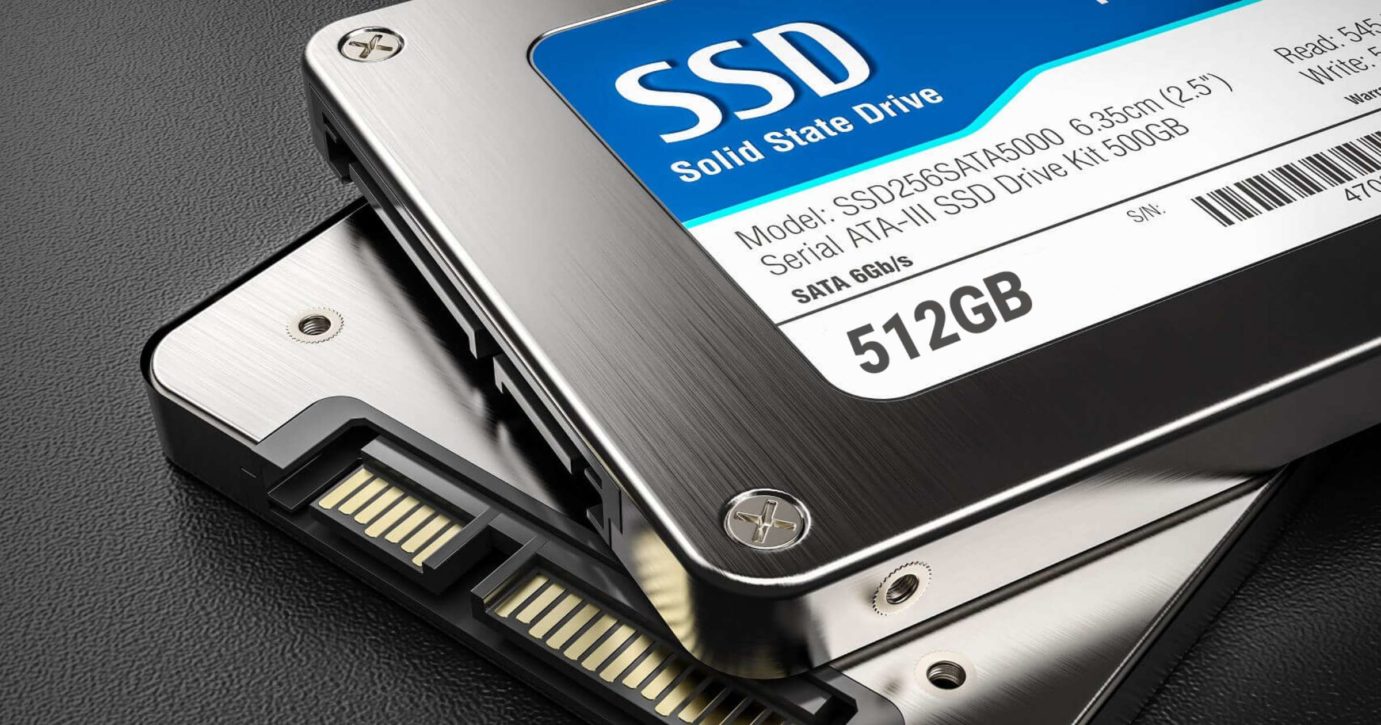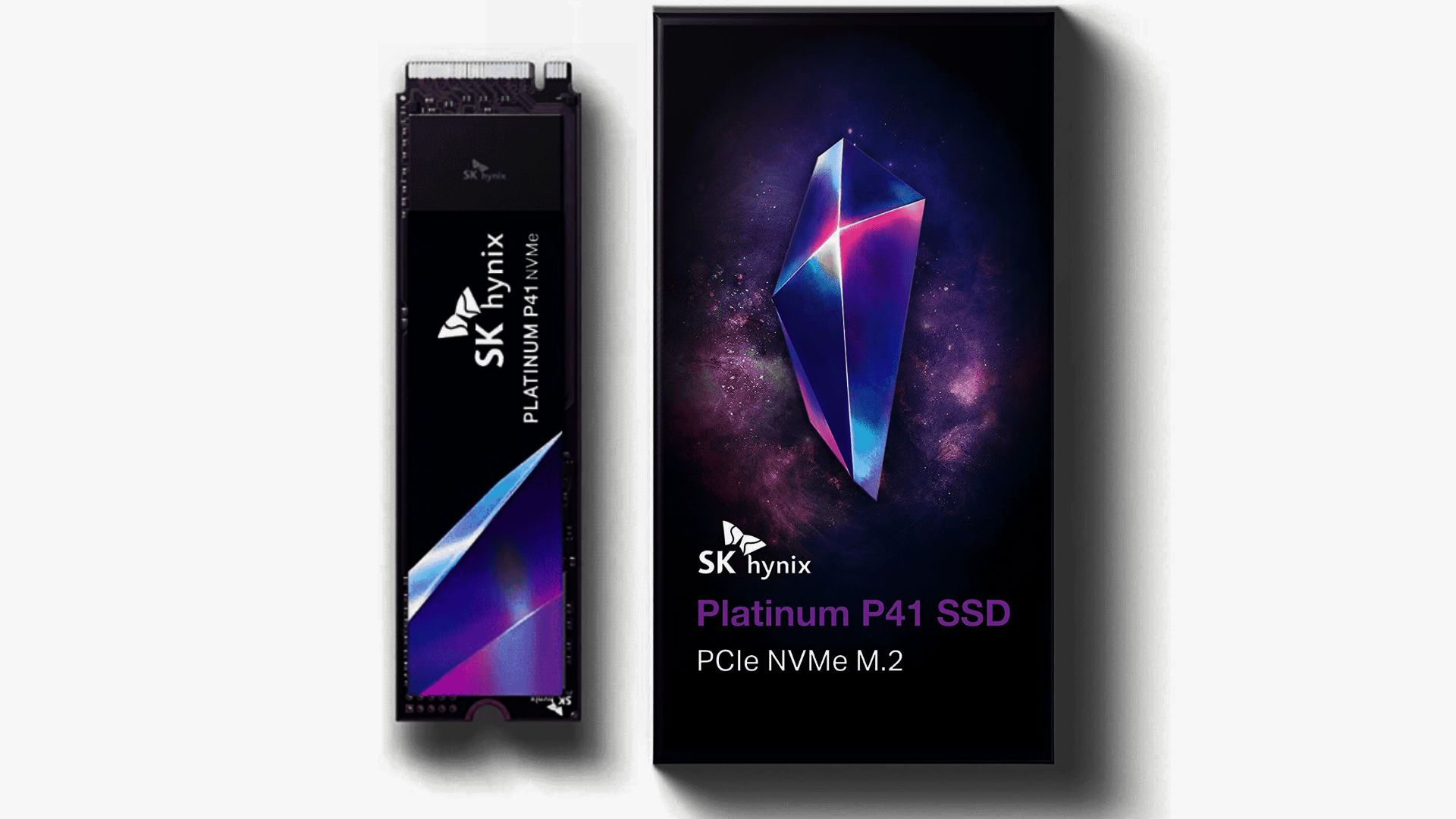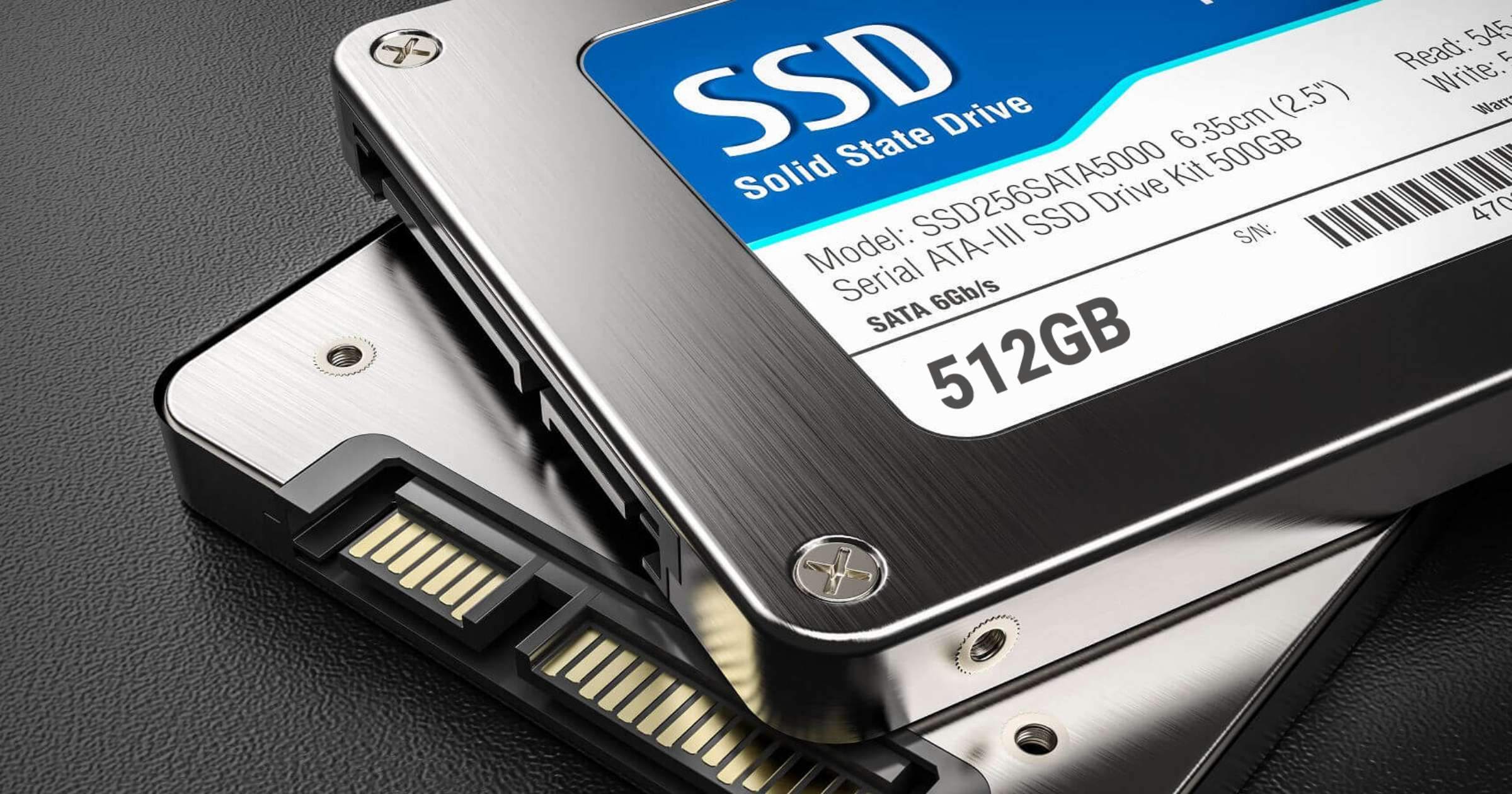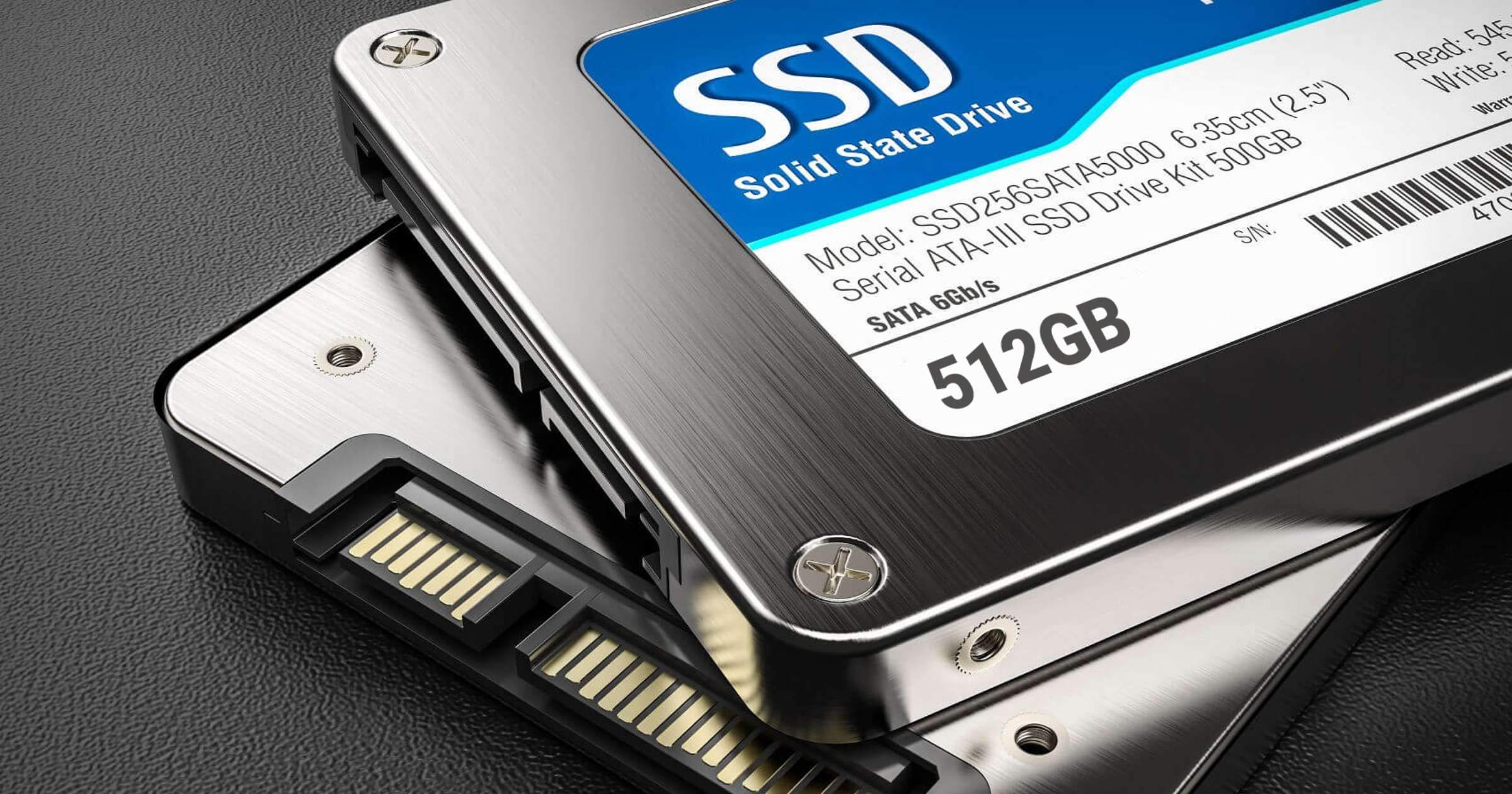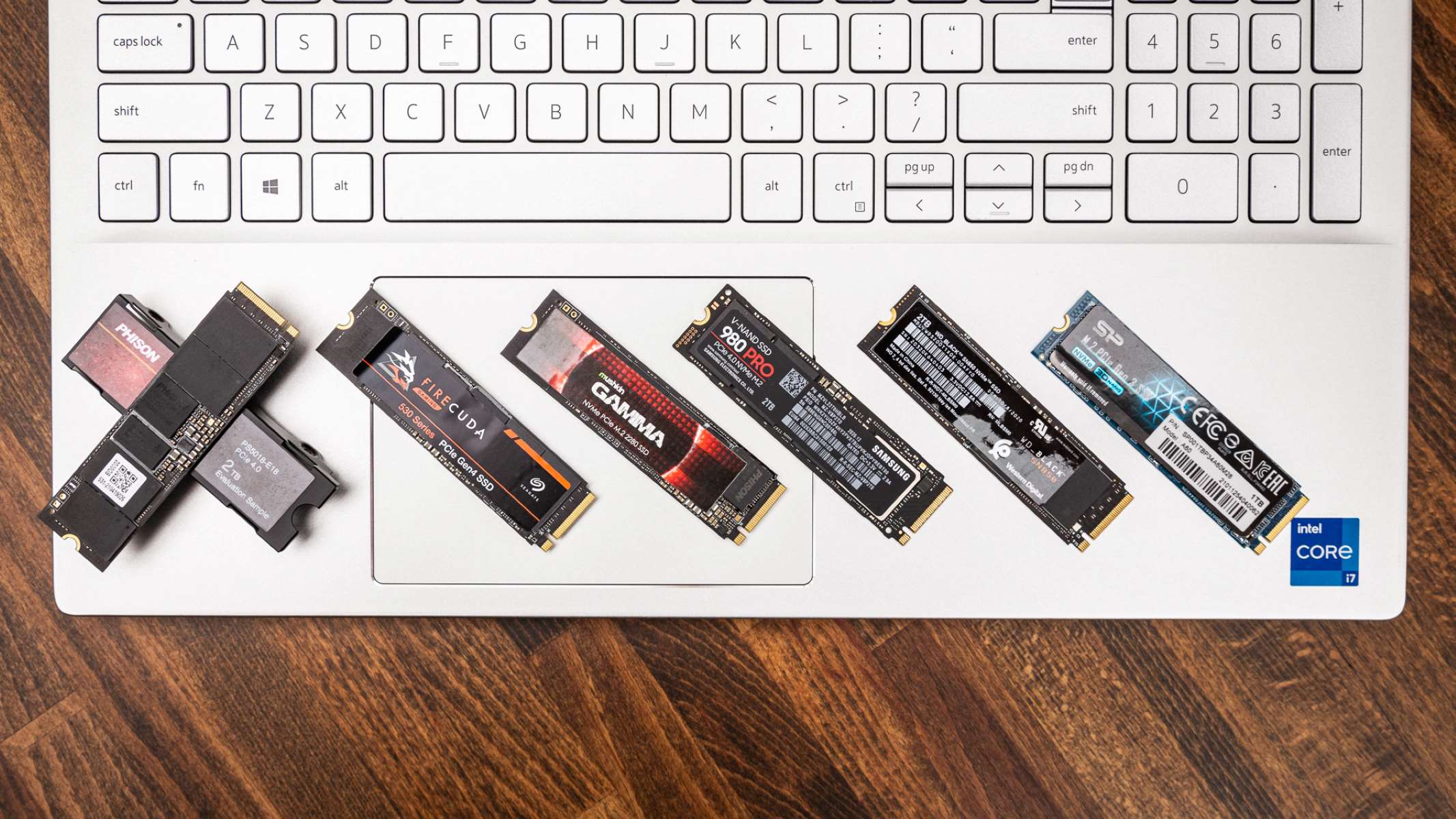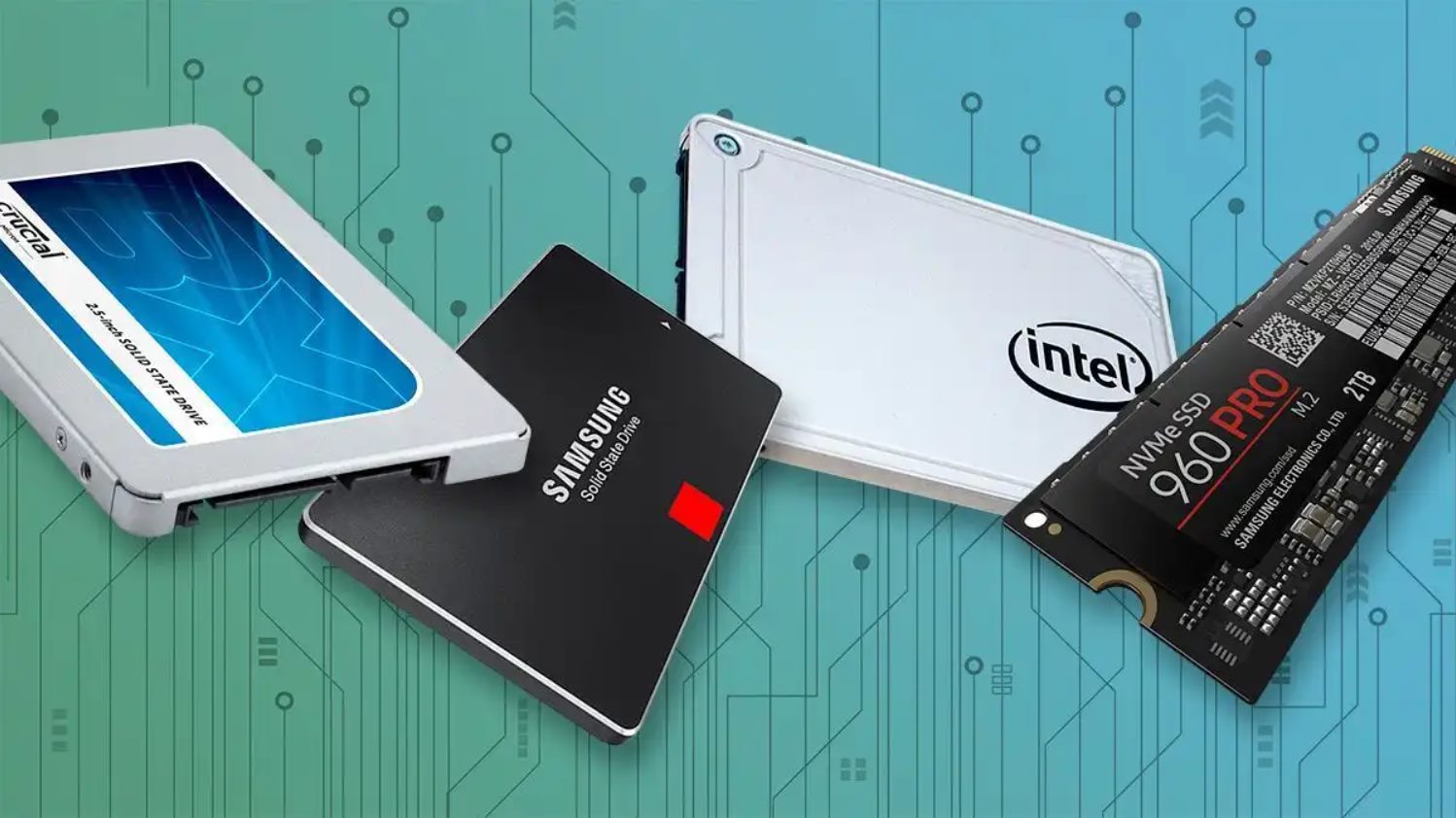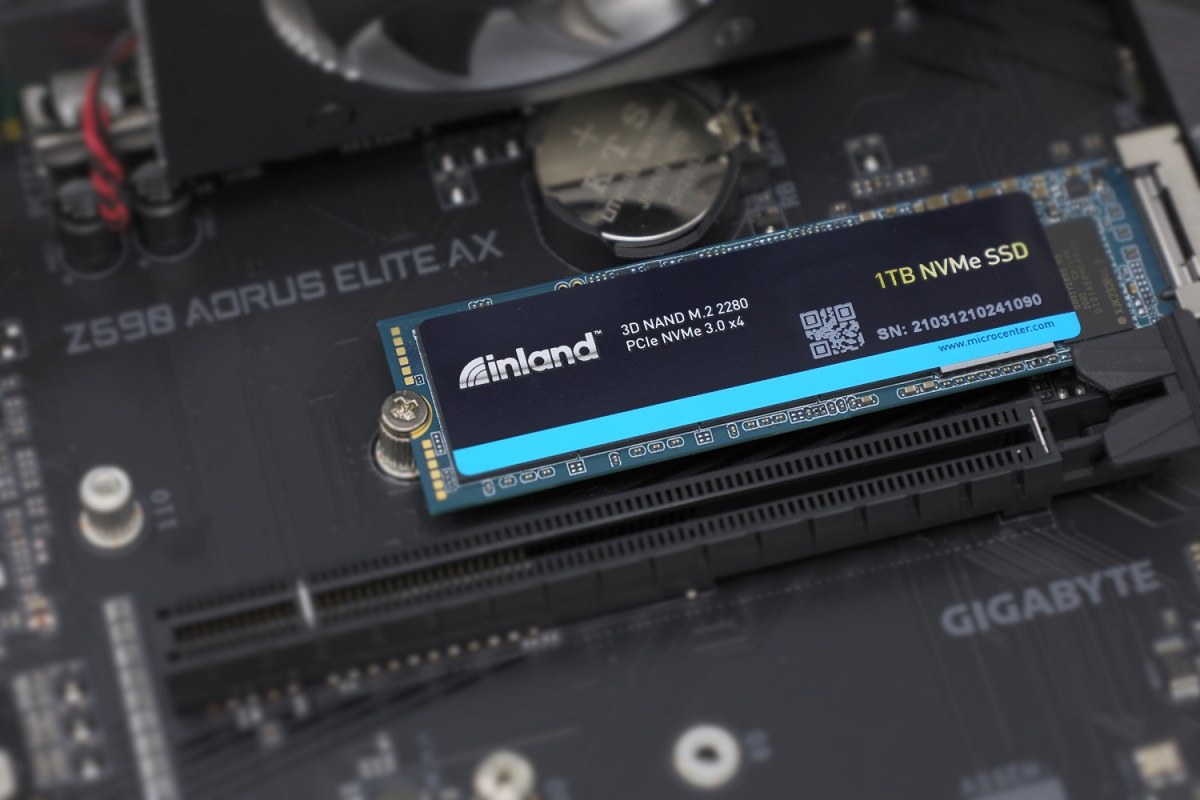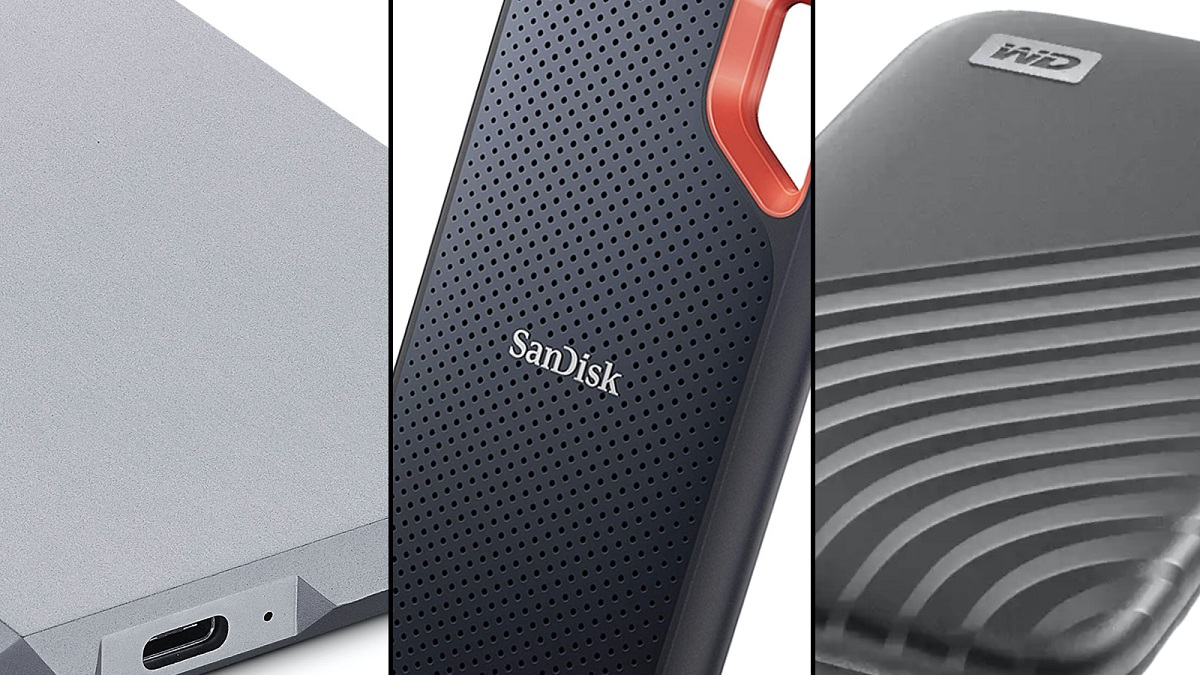Introduction
Welcome to the world of solid state drives (SSDs)! If you’re looking for a storage solution that combines lightning-fast performance, reliability, and ample storage capacity, then you’ve come to the right place. In this article, we’ll delve into the realm of 512GB solid state drives and explore the benefits of choosing this particular storage capacity.
With technology advancing at a rapid pace, traditional hard disk drives (HDDs) are gradually being replaced by SSDs. Solid state drives are known for their speed, durability, and efficiency. They do not rely on spinning discs or moving parts like HDDs do, which results in faster access times and improved overall performance.
When it comes to storage capacity, the 512GB SSD strikes a perfect balance. It offers a generous amount of space to store your files, documents, photos, videos, and applications, without being excessive. This capacity is ideal for people who require a significant amount of storage for their personal or professional needs, but don’t want to sacrifice performance or break the bank.
Throughout this article, we will explore the features and benefits of 512GB solid state drives, discuss why they are a popular choice among consumers, and provide some key considerations to keep in mind before making a purchase. Whether you’re a tech enthusiast, a creative professional, or an everyday user looking to upgrade your storage solution, our comprehensive guide will help you understand the world of 512GB SSDs and make an informed decision.
What is a Solid State Drive?
A solid state drive (SSD) is a type of storage device that stores data on non-volatile memory chips. Unlike traditional hard disk drives (HDDs) that use spinning disks and mechanical components, SSDs rely on flash memory technology to store and retrieve data quickly and efficiently. This flash memory is similar to the memory used in USB drives and memory cards, but SSDs are designed to provide larger capacities and higher performance.
One of the key advantages of SSDs is their speed. They can access and transfer data at lightning-fast speeds, significantly faster than HDDs. This is because there are no moving parts involved in the data retrieval process. Instead, SSDs use microchips called NAND flash memory to store data. When data is saved to an SSD, it is stored in blocks of memory cells. These cells can be accessed directly, allowing for quick retrieval of information.
Another benefit of SSDs is their durability and reliability. Since there are no moving parts, there is less risk of mechanical failure or damage due to shock or vibration. This makes SSDs more resistant to physical impact and ideal for use in portable devices like laptops. Additionally, SSDs consume less power than traditional HDDs, which results in better battery life for laptops and other mobile devices.
SSDs also have a longer lifespan compared to HDDs. Each time data is written or erased on an SSD, it affects the lifespan of the memory cells. However, advancements in flash memory technology have significantly improved the longevity of SSDs. Modern SSDs employ techniques like wear leveling and error-correcting codes to evenly distribute data writes across the memory cells, minimizing the wear on any particular cell and extending the overall lifespan of the drive.
In recent years, SSDs have become increasingly popular for both personal and professional use. They are ideal for tasks that require fast data access, such as gaming, video editing, and running resource-intensive applications. Additionally, SSDs are commonly used as the primary storage drive in laptops, desktops, and even servers, providing a significant improvement in overall system performance.
What is Storage Capacity?
Storage capacity refers to the amount of data that can be stored on a storage device, such as a hard disk drive (HDD) or a solid-state drive (SSD). It is typically measured in units of bytes, with larger capacities being represented in kilobytes (KB), megabytes (MB), gigabytes (GB), terabytes (TB), and so on.
In the world of storage devices, capacity plays a crucial role in determining how much data can be stored on a particular drive. The higher the storage capacity, the more files, documents, photos, videos, and applications can be saved on the device.
Storage capacity is an important consideration when choosing a storage device. It directly impacts the usability and functionality of the device, as well as the flexibility it offers to the user. For example, a storage device with a larger capacity allows for the storage of a greater volume and variety of data, making it suitable for individuals or organizations that deal with large files and require ample space.
When considering storage capacity, it’s essential to evaluate your needs and requirements. If you primarily use your device for casual browsing, document creation, and general use, a lower capacity drive may be sufficient. However, if you work with high-resolution media files, large databases, or run resource-intensive applications, a higher capacity drive would be more suitable.
It’s important to note that the usable storage capacity of a device may be slightly less than the advertised capacity. This is because a portion of the capacity is reserved for the drive’s operating system and formatting. Additionally, as with any digital storage device, some space is required for the file system and metadata.
Storage capacity is also influenced by the type of storage technology used. Traditional hard disk drives (HDDs) typically offer larger storage capacities compared to solid-state drives (SSDs) at a lower cost per gigabyte. On the other hand, SSDs provide faster access speeds and improved performance but tend to be more expensive per gigabyte of storage.
Overall, storage capacity is a key consideration when selecting a storage device, and it is important to choose a capacity that aligns with your needs, budget, and usage requirements.
Understanding 512GB Solid State Drives
512GB solid state drives (SSDs) are a popular choice among consumers looking for a balance between storage capacity and performance. Understanding the features and capabilities of these drives can help you determine if they are the right fit for your storage needs.
First and foremost, the 512GB capacity provides a significant amount of storage space. With 512 gigabytes of storage, you can store thousands of high-resolution photos, hours of HD videos, and a vast library of documents and files. This makes the 512GB SSD well-suited for individuals who require a substantial amount of storage for their personal or professional use.
When it comes to performance, 512GB SSDs excel in two critical areas: speed and reliability. These drives offer lightning-fast read and write speeds, allowing for quick access to your files and applications. Whether you’re loading large multimedia files or launching resource-intensive software, the 512GB SSD can handle it with ease. Additionally, with no moving parts, SSDs are more durable and resistant to shock or impact compared to traditional hard drives, ensuring your data remains safe and secure.
512GB SSDs are available in various form factors, including 2.5-inch drives for laptops and desktops, M.2 drives for ultra-thin devices, and PCIe drives for high-performance applications. This wide range of options makes it easier to find a 512GB SSD that suits your specific device and requirements.
Another advantage of 512GB SSDs is their energy efficiency. SSDs consume less power compared to traditional hard drives, resulting in better battery life for laptops and reduced electricity usage overall. This not only benefits your device’s performance but also contributes to a greener and more sustainable computing experience.
It’s worth noting that while the 512GB capacity is spacious, you should consider your storage needs in the long term. If you regularly work with large files or anticipate an increase in future storage needs, you may want to opt for a higher capacity SSD. However, if you prioritize speed and performance and are mindful of managing your storage space efficiently, a 512GB SSD should suffice.
Overall, 512GB solid state drives offer a versatile storage solution with a balance of capacity, speed, and reliability. Whether you’re a professional needing ample storage for demanding workloads or a casual user seeking snappy performance, a 512GB SSD can be an ideal choice for your storage needs.
Why Choose a 512GB Solid State Drive?
Choosing a 512GB solid state drive (SSD) as your storage solution comes with several compelling reasons. Let’s explore why the 512GB SSD is a popular choice among consumers.
Ample Storage Capacity: The 512GB capacity strikes a perfect balance between spacious storage and affordability. It provides enough space to store a significant amount of data, including documents, photos, videos, and applications, without being excessive. Whether you’re a student, professional, or casual user, a 512GB SSD offers plenty of room for your digital content.
Optimal Performance: One of the key advantages of SSDs, including the 512GB variant, is their superior performance. Unlike traditional hard disk drives (HDDs) that have spinning disks, SSDs use flash memory technology for fast and reliable data access. With the 512GB SSD, you can experience lightning-fast read and write speeds, allowing for quick file transfers, faster application launches, and improved overall system performance.
Enhanced Productivity: The high-speed performance of the 512GB SSD translates to improved productivity. Whether you’re working on intensive tasks like video editing or running multiple applications simultaneously, the 512GB SSD can handle the workload seamlessly. It significantly reduces lag and load times, enabling you to complete your tasks efficiently and maximize your productivity.
Portability and Durability: If you’re a frequent traveler or someone who needs a reliable storage solution on the go, the 512GB SSD is an excellent choice. SSDs are compact and lightweight, making them ideal for use in laptops and portable devices. Moreover, since SSDs have no moving parts like HDDs, they are more resistant to physical shock and impact, ensuring that your data remains intact even when you’re on the move.
Energy Efficiency: Another reason to choose a 512GB SSD is its energy efficiency. Compared to HDDs, SSDs consume less power, resulting in improved battery life for laptops and reduced electricity usage. This not only saves you money on energy costs but also contributes to a greener and more sustainable computing experience.
Future-Proof Investment: Investing in a 512GB SSD ensures that you have ample storage for your current needs, while also providing room to grow. With the increasing size of files and evolving storage demands, having a 512GB capacity allows you to accommodate future data storage requirements without having to upgrade or replace your storage drive in the near term.
In summary, a 512GB solid state drive offers a balance of capacity, performance, portability, and energy efficiency. Whether you’re a professional requiring ample storage for your work or a casual user seeking improved system performance, the 512GB SSD is a reliable and future-proof choice for your storage needs.
Benefits of a 512GB Solid State Drive
Choosing a 512GB solid state drive (SSD) comes with a range of benefits that make it an attractive storage option. Let’s explore the advantages of opting for a 512GB SSD over other storage alternatives.
1. Increased Speed: The primary advantage of a 512GB SSD is its blazing-fast speed. Unlike traditional hard disk drives (HDDs) that rely on spinning disks, SSDs use flash memory technology, resulting in significantly faster data access times and quicker file transfers. With a 512GB SSD, you can experience near-instantaneous boot times, faster application launches, and smoother overall system performance.
2. Enhanced Productivity: The rapid speed of a 512GB SSD allows for improved productivity. Whether you’re working on resource-intensive tasks like video editing, running multiple applications simultaneously, or accessing large files, the faster read and write speeds of the SSD can significantly reduce lag and waiting times. This enables you to complete your work more efficiently and increase your overall productivity.
3. Ample Storage Space: With a 512GB capacity, a solid state drive provides ample storage for your files, documents, photos, videos, and applications. This allows you to store a vast amount of data without worrying about running out of space. Whether you’re a creative professional dealing with high-resolution media files or a casual user with a large digital library, the 512GB SSD ensures you have enough room for your storage needs.
4. Reliable and Durable: SSDs are more reliable and durable compared to HDDs. Since SSDs have no moving parts, they are less prone to failures caused by physical shock, vibration, or mechanical wear and tear. This makes a 512GB SSD an ideal choice for portable devices like laptops, where durability is crucial. Additionally, SSDs have a longer lifespan, allowing you to use your storage drive for years to come.
5. Energy Efficiency: SSDs are more energy-efficient than HDDs, meaning they consume less power during operation. This results in improved battery life for laptops and reduced energy consumption overall. By choosing a 512GB SSD, you not only experience high-performance storage but also contribute to a more eco-friendly and sustainable computing experience.
6. Noise-Free Operation: Unlike HDDs, which produce noise due to the spinning of the disks and moving parts, SSDs operate silently. The absence of moving components in a 512GB SSD eliminates noise pollution, creating a quieter and more peaceful computing environment.
7. Easy Installation and Maintenance: Installing a 512GB SSD is straightforward and hassle-free. Most modern computers and laptops have built-in support for SSDs, and transferring data from an existing storage drive is often a simple process. Additionally, SSDs require minimal maintenance since they have no mechanical parts that can fail or become misaligned, saving you time and effort in the long run.
In summary, the benefits of a 512GB solid state drive include improved speed, enhanced productivity, ample storage capacity, reliability, energy efficiency, noise-free operation, and ease of installation and maintenance. Whether you’re a professional in need of high-performance storage or a casual user seeking a reliable and efficient storage solution, a 512GB SSD provides a range of advantages to enhance your computing experience.
Considerations Before Purchasing a 512GB SSD
Before purchasing a 512GB solid state drive (SSD), there are several important factors to consider. These considerations will help ensure that the SSD meets your specific needs and requirements. Let’s explore the key considerations to keep in mind before making your purchase.
1. Compatibility: Check the compatibility of the 512GB SSD with your device. Ensure that your computer or laptop supports the required interface, such as SATA or PCIe, and the form factor, such as 2.5-inch or M.2. Verify if any specific manufacturer or model is recommended for compatibility with your system to guarantee a smooth installation process.
2. Speed and Performance: While all SSDs offer faster performance compared to traditional hard drives (HDDs), it’s important to assess the specific read and write speeds of the 512GB SSD you plan to purchase. Look for SSDs with high-speed performance to get the most out of your storage solution.
3. Endurance and Lifespan: Consider the endurance and lifespan of the 512GB SSD. SSDs have limited write cycles, which means that each time data is written to the drive, it affects its overall lifespan. Look for SSDs with higher endurance ratings to ensure long-lasting usage, particularly if you are planning to perform frequent and intensive read and write operations.
4. Warranty: Check the warranty offered by the SSD manufacturer. A longer warranty period indicates the manufacturer’s confidence in the SSD’s durability and performance. Be sure to review the terms and conditions of the warranty to understand what is covered and the steps required for warranty claims, should the need arise.
5. Price and Value: Compare the prices of different 512GB SSD options to ensure you are getting the best value for your money. Take into consideration the performance, reliability, brand reputation, and additional features offered by each SSD. It’s important to strike a balance between price and the specific requirements you have for storage capacity and performance.
6. Future Expansion: Consider your future storage needs. While a 512GB SSD may be suitable for your current requirements, assess whether you anticipate needing more storage in the future. If you frequently work with large files or foresee your storage needs increasing over time, it may be worth considering a higher capacity SSD to accommodate future expansion.
7. Brand Reputation and Reviews: Take into account the reputation of the SSD brand and read reviews from other users. Look for feedback regarding performance, reliability, and customer support. By doing so, you can make an informed decision based on the experiences and opinions of others.
8. Backup and Data Transfer: Before installing the 512GB SSD, ensure that you have a backup of your data. Transferring data from your existing storage drive to the new SSD can be a complex process, so it’s essential to have a backup in case of any unforeseen issues. Make sure you have the necessary tools and software to ease the data transfer process smoothly.
By considering these factors before purchasing a 512GB SSD, you can choose a storage solution that best meets your needs, is compatible with your device, and provides reliable performance for your specific use case.
How to Install a 512GB Solid State Drive
Installing a 512GB solid state drive (SSD) is a relatively straightforward process that can greatly enhance the performance and storage capacity of your computer or laptop. Here are the general steps to follow when installing a 512GB SSD:
1. Gather the Necessary Equipment: Make sure you have all the necessary tools and equipment for the installation, including the 512GB SSD, a screwdriver, an anti-static wristband (optional), and any additional cables or adapters required for your specific device.
2. Backup Your Data: Before installing the SSD, it is important to backup your existing data to ensure you do not lose any valuable information during the installation process. This can be done by transferring your files to an external hard drive, cloud storage, or another backup solution.
3. Prepare Your Device: Shut down your computer or laptop, unplug it from the power source, and remove the battery (if applicable). This will help prevent any accidental damage during the installation process.
4. Locate the Existing Storage Drive: Open the computer or laptop case and locate the existing storage drive. Depending on your device, it may be a 2.5-inch drive bay or an M.2 slot. Refer to the documentation of your device or consult the manufacturer’s website for specific instructions on locating the storage drive.
5. Connect the SSD: If installing a 2.5-inch SSD, connect the SATA data cable and the power cable to the SSD. Ensure a secure connection is made for both cables. If installing an M.2 SSD, insert the SSD into the compatible slot and secure it using the provided screw, if necessary.
6. Mount the SSD: If installing a 2.5-inch SSD, place the SSD into the empty drive bay and secure it using screws. Make sure the SSD is firmly mounted to avoid any movement or damage during use.
7. Reassemble Your Device: Once the SSD is properly connected and mounted, reassemble your device by putting the case back together, securing any screws or fasteners, and reconnecting any cables that were disconnected earlier.
8. Boot Up and Format the SSD: Turn on your device and enter the BIOS or UEFI settings. Verify that the SSD is detected by the system. If the SSD is not recognized, consult the device’s manual or the manufacturer’s website for guidance. Once the SSD is detected, proceed to format it using the appropriate method for your operating system.
9. Restore Your Data: After formatting, you can restore your data from the backup you created earlier. This can be done by transferring the files back to the SSD or restoring from your chosen backup solution.
10. Verify Operation and Enjoy: Once the data has been restored, verify the operation of your device by launching applications and accessing files stored on the SSD. Enjoy the improved speed and performance that the 512GB SSD brings to your system.
Note: It is recommended to refer to the specific device’s manual or the manufacturer’s website for detailed instructions tailored to your particular model, as installation procedures may vary.
By following these steps and ensuring careful handling, you can successfully install a 512GB SSD and enjoy the benefits of increased storage and improved performance.
Comparison: 512GB vs Other SSD Capacities
When it comes to solid state drives (SSDs), storage capacity plays a significant role in determining the amount of data you can store. While the 512GB SSD is a popular choice, it’s important to consider how it compares to other SSD capacities available on the market. Let’s explore the key differences and factors to consider when comparing the 512GB SSD to other SSD capacities.
1. 256GB SSD: A 256GB SSD offers half the storage capacity of a 512GB SSD. This capacity can still provide ample space for everyday use, such as storing documents, photos, and a moderate collection of applications. However, if you work with large files or have a growing media library, the 256GB SSD may feel restrictive in terms of long-term storage needs.
2. 1TB SSD: On the other end of the spectrum, a 1TB SSD offers double the storage capacity of the 512GB SSD. This extra capacity allows for more extensive file storage, making it suitable for professionals or power users who work with large datasets, high-resolution media files, or resource-intensive applications. However, it is worth considering the additional cost of a 1TB SSD and whether the extra storage space is necessary for your specific requirements.
3. 2TB and higher: SSDs with capacities of 2TB and higher are designed for users with extensive storage requirements, such as content creators, gamers, or professionals dealing with large file sizes. These higher capacities provide an abundant amount of space to store massive media libraries, multiple virtual machines, and large-scale applications. However, be mindful that the cost per gigabyte increases as the capacity grows, so these higher-capacity drives come with a higher price tag.
4. Cost Per Gigabyte: The cost per gigabyte plays a crucial role in comparing SSD capacities. Generally, the larger the capacity, the lower the cost per gigabyte. However, as SSD capacities increase, the cost per gigabyte tends to diminish at a diminishing rate. The 512GB SSD provides an optimal balance between capacity and cost, offering a reasonable price per gigabyte while still providing ample storage for most users.
5. Future Expansion: Consider your future storage needs when comparing SSD capacities. If you anticipate significant growth in your file storage requirements, it may be more cost-effective to invest in a higher-capacity SSD upfront to accommodate your future expansion needs. Conversely, if you tend to manage your files efficiently and prioritize speed and performance over raw storage capacity, a 512GB SSD may be the ideal choice.
6. Personal Requirements: Ultimately, the best SSD capacity depends on your personal requirements and budget. Assess your current storage needs and consider factors such as the complexity of your projects, the size of your media libraries, and your long-term growth expectations. This will help you determine whether the 512GB SSD or a different capacity provides the right balance of storage capacity and affordability for your specific needs.
In summary, when comparing the 512GB SSD to other SSD capacities, consider factors such as your storage requirements, future expansion needs, cost per gigabyte, and personal preferences. By evaluating these factors, you can determine which SSD capacity offers the best balance of storage capacity, cost-effectiveness, and performance for your unique needs.
Conclusion
Choosing the right storage solution is essential for maximizing the performance and efficiency of your computer or laptop. The 512GB solid state drive (SSD) offers a versatile solution that balances storage capacity, speed, and reliability. With its ample space, fast speed, and durability, the 512GB SSD is an excellent choice for users who require a significant amount of storage for their personal or professional needs.
Throughout this article, we explored the various aspects of the 512GB SSD, including what it is, its benefits, considerations before purchasing, installation steps, and a comparison to other SSD capacities. By understanding these factors, you can make an informed decision based on your specific requirements.
The 512GB SSD provides enough storage capacity to accommodate a vast array of files, from documents and photos to videos and applications. Its high-speed performance, reliability, and energy efficiency make it suitable for both casual users and professionals who demand optimal performance from their storage device.
When considering the 512GB SSD, it’s important to evaluate factors such as compatibility, speed, endurance, warranty, and price. Additionally, consider future expansion needs, the reputation of the brand, and the overall value provided. By taking these factors into account, you can select the best 512GB SSD that meets your needs and fits within your budget.
Once you have chosen the 512GB SSD, the installation process is relatively straightforward. Following the steps outlined in this article will ensure a smooth installation and the successful integration of the SSD into your device.
In conclusion, the 512GB solid state drive is an excellent storage solution that offers ample capacity, fast performance, and enhanced reliability. Whether you’re a student, professional, or casual user, the 512GB SSD provides the storage space you need while improving the overall speed and efficiency of your computer or laptop. Upgrade to a 512GB SSD and experience the benefits of fast, reliable, and spacious storage for all your digital needs.







